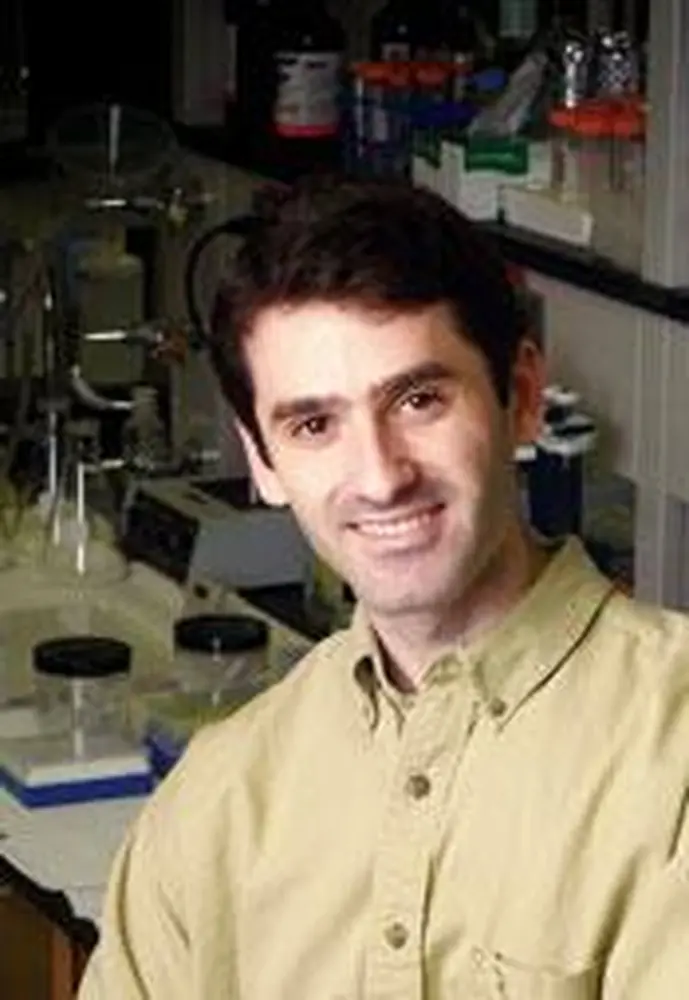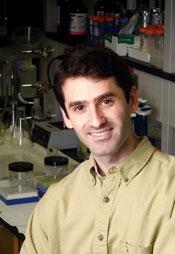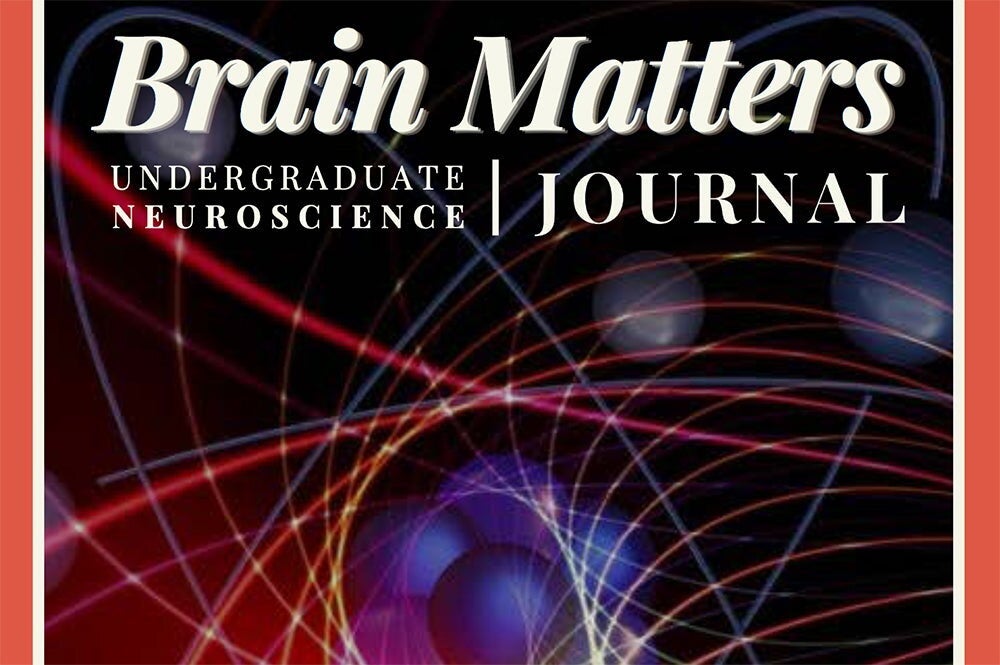

University of Illinois researchers have discovered that DNA makes an effective tool for changing the shape of molecules-which, in turn, may help change the shape of the rapidly expanding field of nanotechnology.
In a recent breakthrough, U. of I. researchers found that by attaching DNA to molecules over 1,000 atoms in size, they can change the shape of these macromolecules, says Scott Silverman, a chemistry professor in the College of Liberal Arts and Sciences. Changes in shape can alter the way that macromolecules function.
According to Silverman, their basic research opens the door for many possible applications of DNA tools in nanotechnology-the manipulation of matter at the scale of several atoms. For instance, one major goal of nanotechnology is the creation of ultra-small machines, which would assemble structures and materials at the molecular level. The U. of I. research goes a long way toward understanding how DNA might influence such an assembly.
On the biotechnology side, it could be possible someday to use these DNA tools to correct flaws in the way macromolecules "fold." Some diseases have been linked to problems that can arise when macromolecules fold.
In their work, Silverman and graduate student Chandrasekhar Miduturu started with a piece of unfolded RNA, a macromolecule that transmits genetic information, creating proteins. Through specific chemical reactions, they attached two strands of DNA, each resembling one side of a ladder, to the RNA.
"In some cases, the DNA stuck to the RNA like a barnacle on a ship, without changing the structure of the RNA," Silverman said. "But in other cases, the DNA changed the RNA structure."
Equally important, the researchers were able to predict when the DNA would change the shape, or folding, of the RNA. This ability to predict the effect of the DNA bodes well for other uses. For example, they might be able to attach "DNA constraints" to non-biological macromolecules such as polymers in plastics, changing their shape and function.
Researchers are now experimenting with ways to attach two or more DNA constraints to a macromolecule. Silverman says this would make it possible for them to "program" the DNA to change the shape of the large molecules in many different ways.


